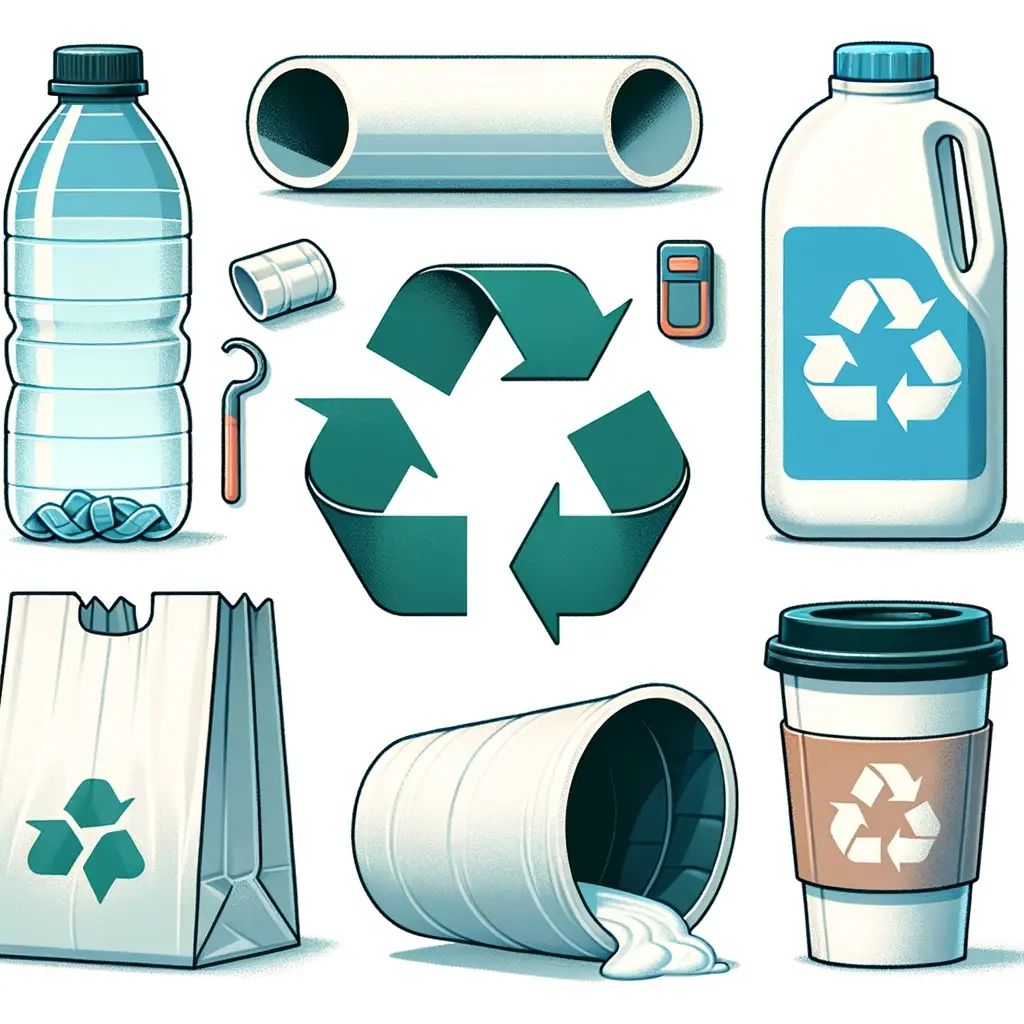Plastic is an indispensable material in modern life, popular for its lightness, affordability, and ease of manufacture. However, due to the existence of various types of plastics, it is necessary to classify them. The classification of plastics can be based on several different criteria including their chemical structure, source, processing method and application.
From a recycling point of view, plastics are classified into the following families:

Contents
PET or PETE (Polyethylene Terephthalate):
Polyethylene Terephthalate, commonly known as PET or PETE, is a prevalent type of plastic, particularly in the packaging industry. It’s the go-to material for a variety of beverage bottles and food containers due to its clarity, strength, and safety for containing consumables. PET is highly favored for recycling; it can be efficiently processed and repurposed into numerous products. Once recycled, PET is transformed into fibers used in the textile industry for clothing and carpeting, demonstrating its versatility. It’s also commonly reformed into new food and beverage containers, playing a significant role in the sustainable cycle of packaging materials. This ability to be recycled and reused highlights PET’s contribution to reducing environmental waste and promoting a more circular economy in material usage.


HDPE or PEHD (High-Density Polyethylene)
High-Density Polyethylene, often abbreviated as HDPE or PEHD, is a type of plastic renowned for its strength, durability, and versatility. It is extensively used in a variety of applications, from household containers to industrial products. HDPE is the material of choice for products like milk jugs, laundry detergent containers, and motor oil bottles. This is due to its strong chemical resistance, ability to withstand high temperatures, and its impermeability.
HDPE is not only durable but also lightweight, making it an ideal packaging material. It’s also one of the most recycled plastics, which speaks to its sustainability credentials. When recycled, HDPE can be repurposed into new containers, plastic lumber for outdoor decking, pipes, and even children’s toys. This recyclability helps in reducing environmental waste and promoting a more sustainable approach to plastic use.
The widespread use and recycling of HDPE illustrate the balance between functional material requirements and environmental considerations, demonstrating how plastics can be both practical and eco-friendly when managed effectively.
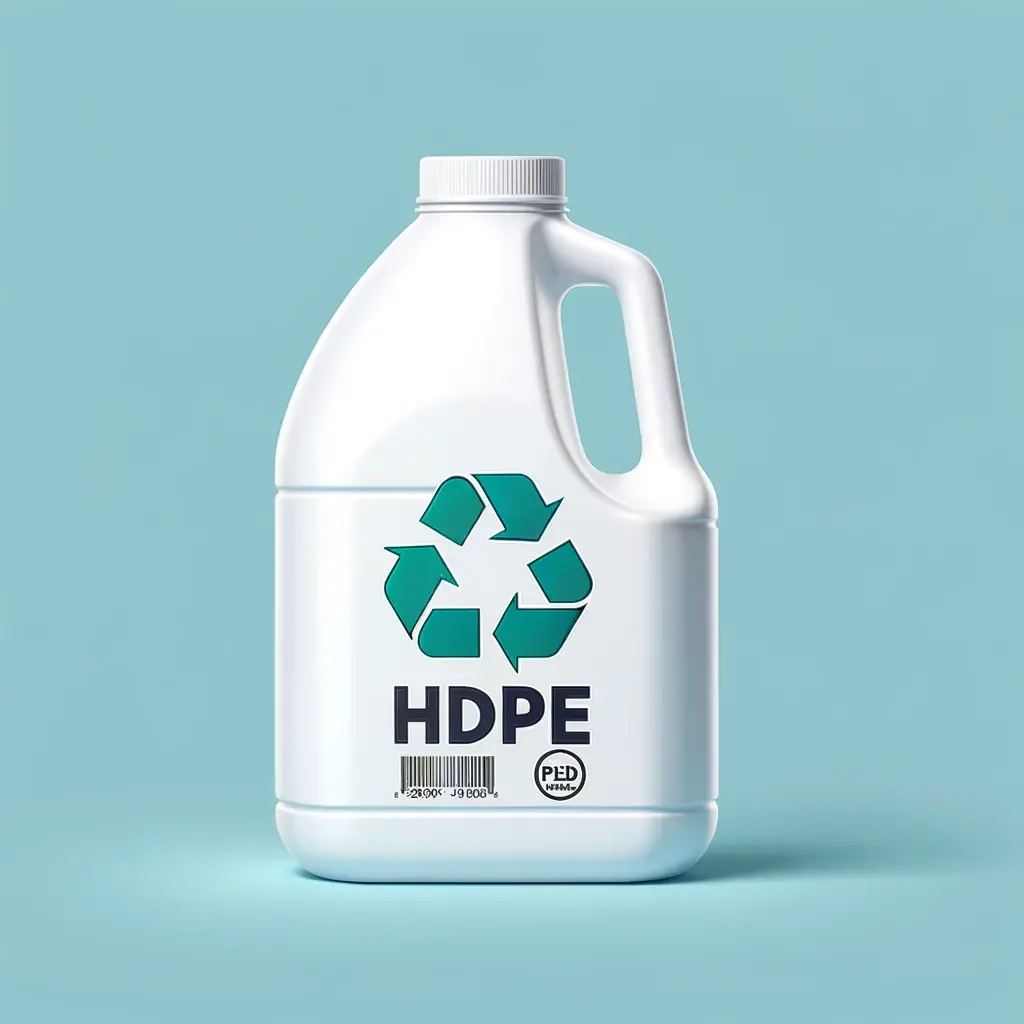

PVC (Polyvinyl Chloride)
Polyvinyl Chloride, commonly known as PVC, is a widely used synthetic plastic polymer. It’s the third-most produced plastic, after polyethylene (PE) and polypropylene (PP). PVC is known for its durability, versatility, and chemical resistance, which makes it suitable for a broad range of applications.
There are two basic forms of PVC:
- Rigid PVC: This form of PVC is used in construction and is known for its strength and rigidity. It’s commonly found in pipes, doors, windows, and decking. Due to its durability and weather resistance, rigid PVC is an excellent material for building applications.
- Flexible PVC: When plasticizers are added to PVC, it becomes flexible. This form of PVC is used in plumbing, electrical cable insulation, imitation leather, signage, inflatable products, and various applications where a rubber-like flexibility is required.
PVC is also used in healthcare, for medical devices and tubing, as well as in everyday items like clothing and accessories, owing to its ability to blend with other materials to achieve desired properties.
While PVC is extremely useful, its recycling and environmental impact have been subjects of concern. PVC recycling is less straightforward than other plastics due to the presence of chlorine in its composition. However, efforts are being made to improve PVC recycling methods and reduce its environmental footprint through initiatives like VinylPlus in Europe, which aims to enhance the sustainability profile of PVC.
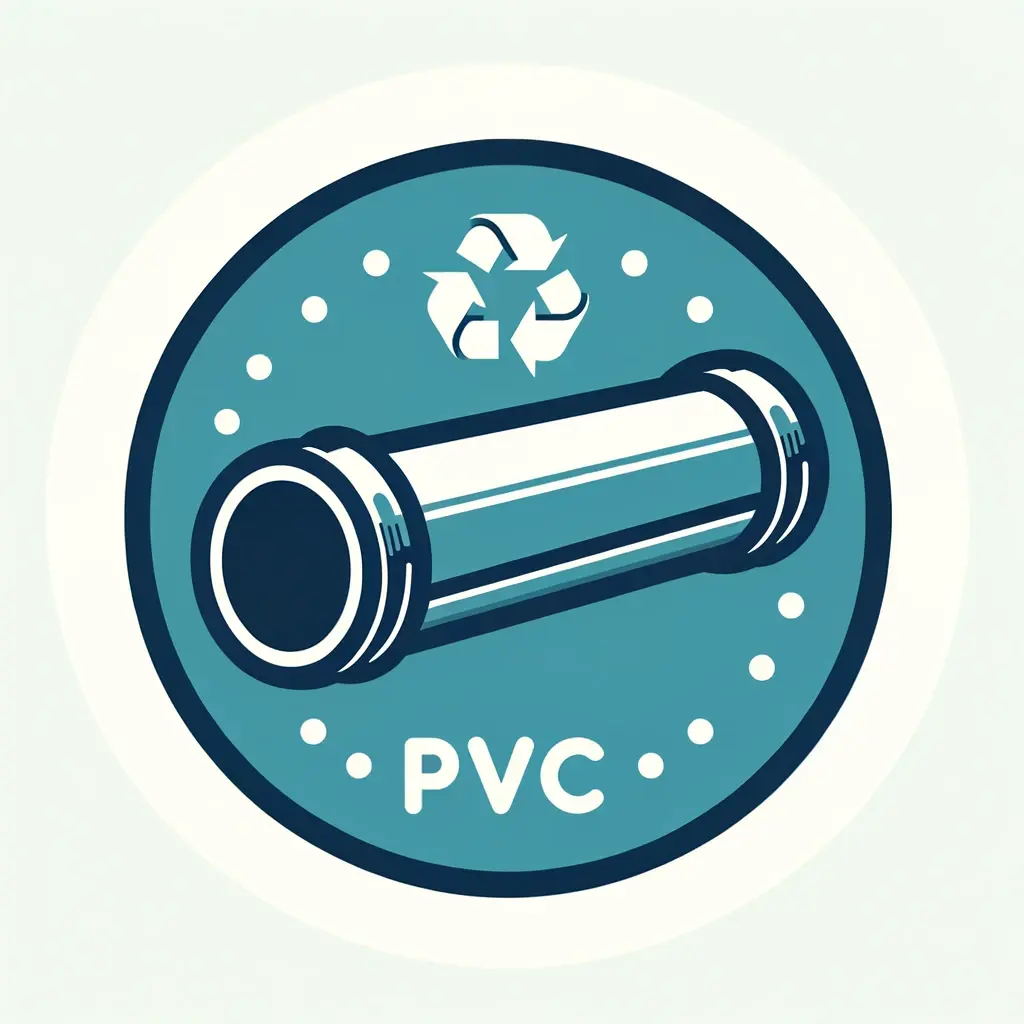

LDPE or PEBD (Low-Density Polyethylene)
Low-Density Polyethylene, commonly known as LDPE or PEBD (Polyéthylène Basse Densité in French), is a widely used type of thermoplastic. It’s recognized for its flexibility, softness, and relative transparency, which make it suitable for a variety of applications.
Here are some key points about LDPE:
- Applications: LDPE is frequently used in packaging materials, such as plastic bags for groceries, dry cleaning, bread, frozen foods, and garbage. Its flexibility also makes it ideal for squeeze bottles, like those used for mustard or honey. In addition, LDPE is used in coatings for paper milk cartons and hot and cold beverage cups.
- Properties: LDPE has a lower density and melting point compared to HDPE (High-Density Polyethylene). It’s less rigid and generally less chemically resistant, but its higher ductility makes it a suitable material for products requiring flexibility.
- Recycling and Environmental Impact: LDPE can be recycled, although it’s not as commonly recycled as some other plastics like PET or HDPE. When recycled, LDPE is used to make new plastic bags, compost bins, paneling, furniture, floor tiles, and shipping envelopes.
- Production: LDPE is made from the polymerization of ethylene, a derivative of crude oil and natural gas, under high pressure.
- Safety: Like other types of polyethylene, LDPE is considered safe for food contact and is often used in food packaging.
LDPE’s combination of flexibility and durability has made it a widely used material, particularly in packaging and container applications. However, the environmental impact of single-use plastics, which often include LDPE products, is a growing concern, leading to efforts to improve recycling rates and develop more sustainable approaches to plastic use and disposal.
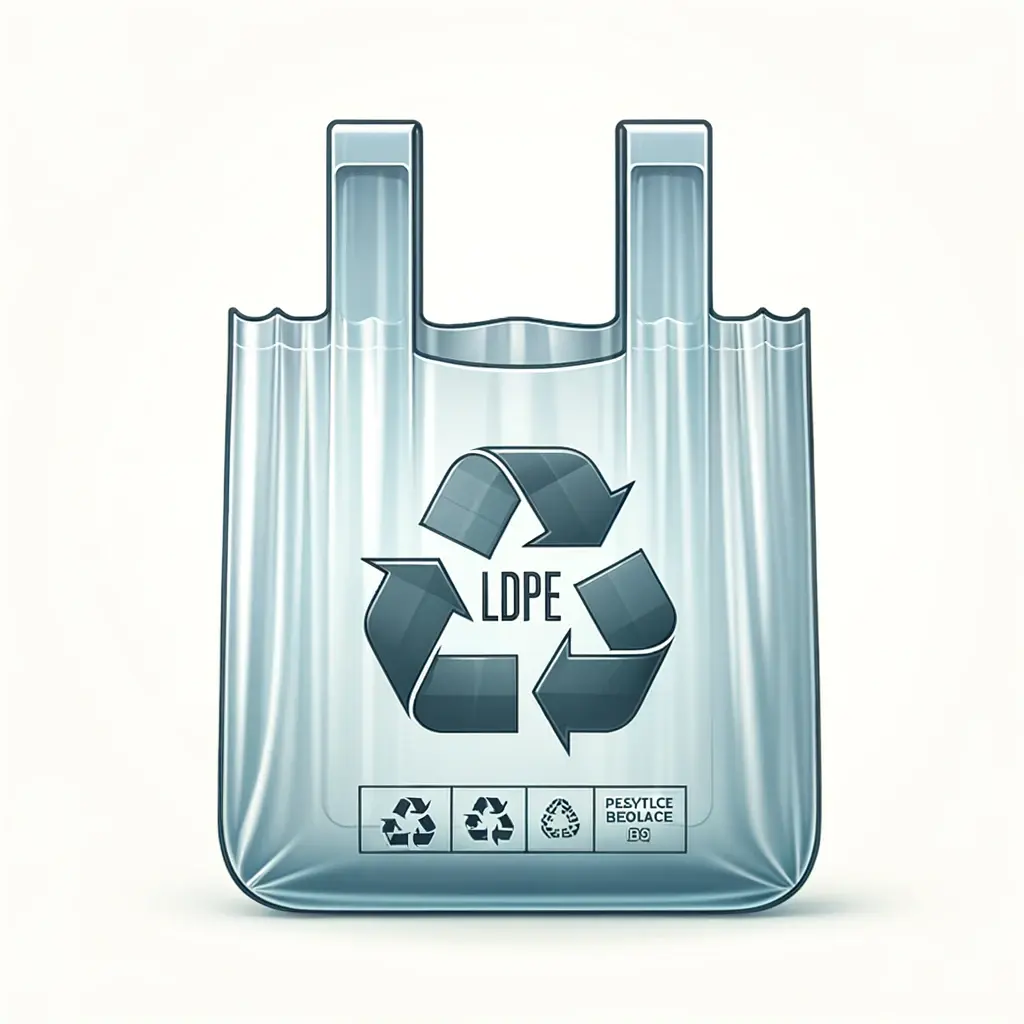

PP (Polypropylene)
Polypropylene (PP) is a durable and flexible plastic commonly used in various everyday items. It’s known for being resistant to heat, making it ideal for food containers and microwave dishes. PP is also used in medical equipment, automotive parts, packaging materials, and some textiles. It’s a recyclable material, often marked with the recycling symbol number 5. PP’s resistance to chemicals and wear makes it suitable for a wide range of uses, although like other plastics, its environmental impact is a concern.
- Food Containers: Tupperware and other reusable plastic containers for storing food.
- Medical Equipment: Syringes, medicine bottles, and various medical devices.
- Automotive Parts: Bumpers, car battery casings, and interior trim.
- Packaging Materials: Packaging tapes, strapping, and various types of wrappings.
- Consumer Goods: Lawn chairs, plastic dishware, and utensils.
- Textiles: Certain carpets, rugs, and upholstery fabrics.
- Bottles: Shampoo bottles, laundry detergents, and cleaning product containers.
- Children’s Toys: Durable plastic toys and play equipment.
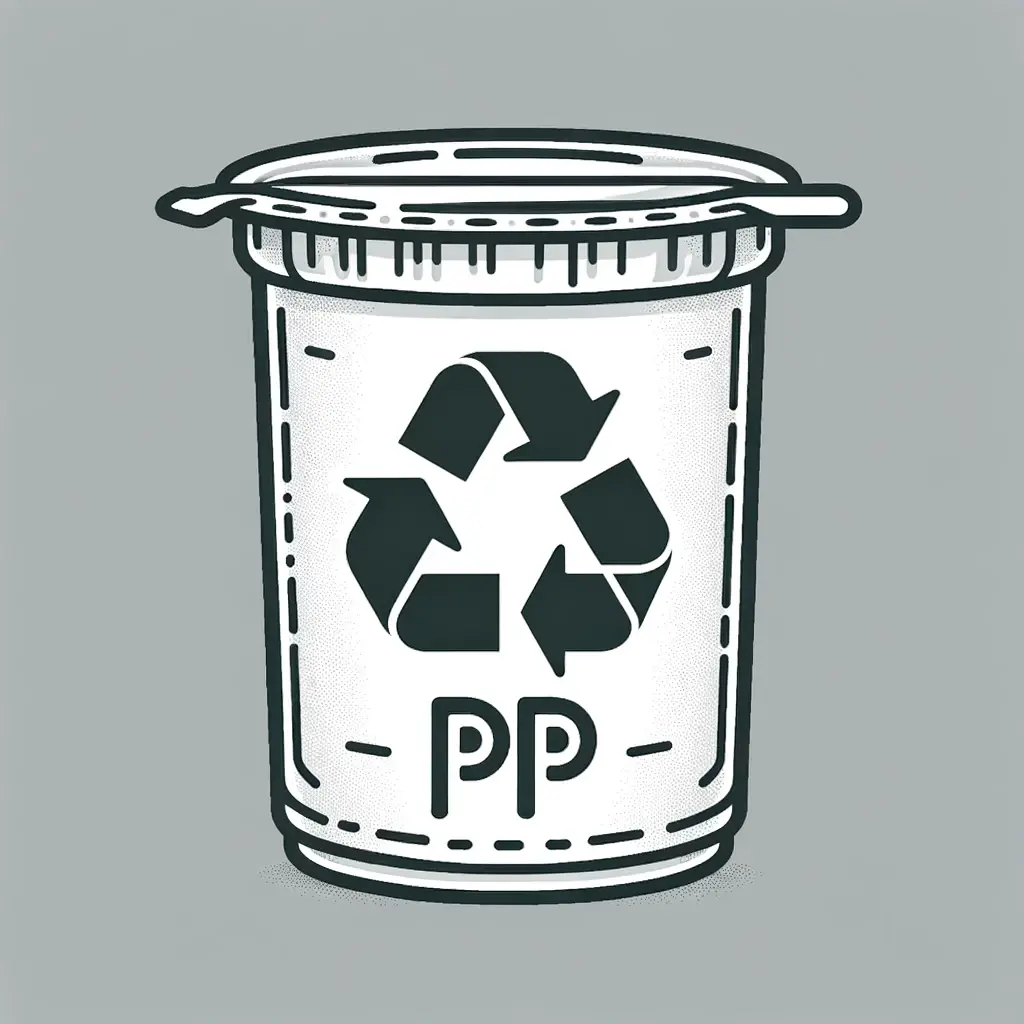

PS (Polystyrene)
Polystyrene (PS) is a synthetic aromatic hydrocarbon polymer made from the monomer styrene. It is a versatile plastic used in a variety of applications due to its lightweight, insulating properties, and ability to be molded into different shapes. Here are some common uses of polystyrene:
- Food Service Products: PS is often used in disposable cutlery, plastic cups, and foam food containers like egg cartons and take-out boxes.
- Packaging Materials: Polystyrene foam is frequently used for packaging electronics, appliances, and other fragile items because of its cushioning properties.
- Building and Construction: It’s used as insulation material in the form of foam boards or rigid panels.
- Consumer Products: Many toys, household appliances, and cosmetic cases are made from PS.
- Medical Applications: Petri dishes, test tubes, and diagnostic components in medical settings often use PS due to its clarity and sterility.
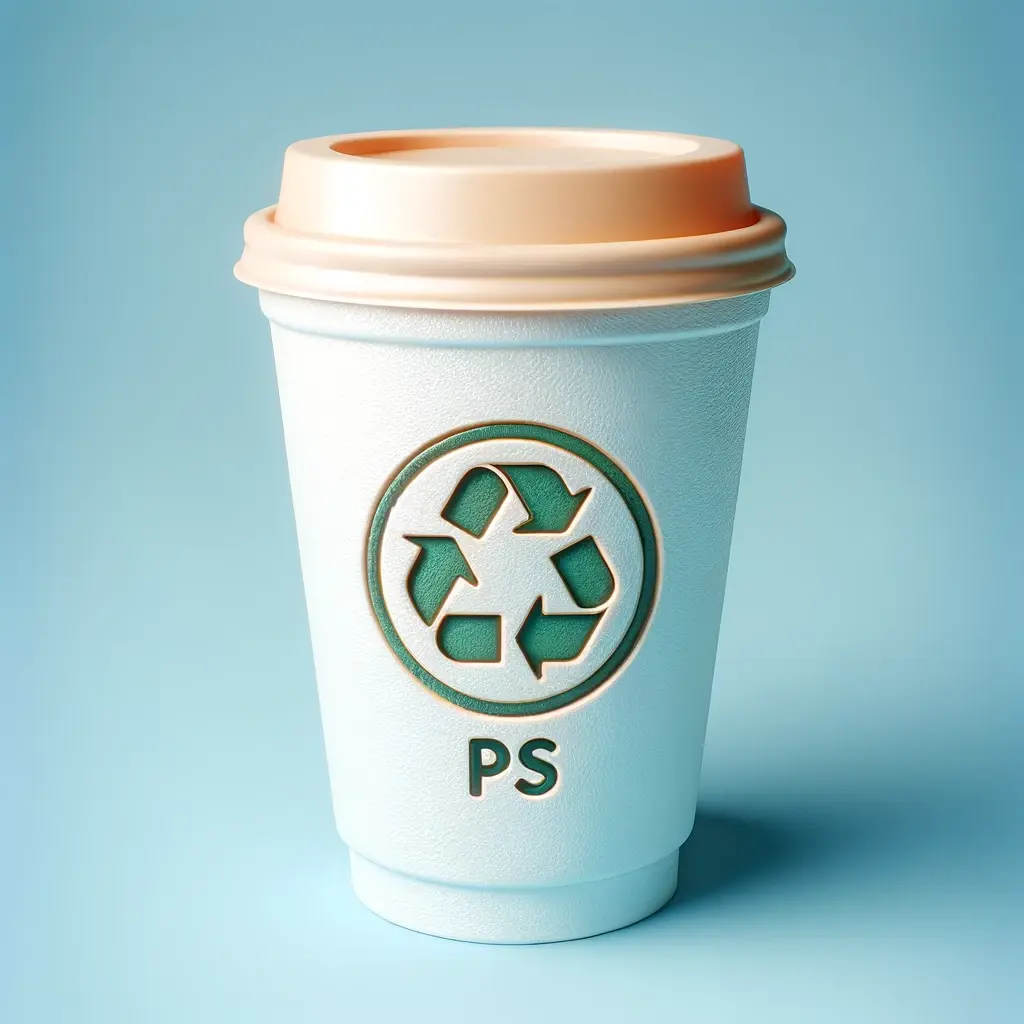
Each type of plastic has a recycling symbol, usually a triangle of arrows with a number in the center, that helps identify it for proper disposal and recycling. Awareness and proper classification of plastics can lead to more efficient waste management and a reduced environmental impact.




